
Knee pain is one of the most common symptoms for which patients turn to orthopedists and other specialists. Many people completely ignore the appearance of unpleasant sensations, considering them age-related and almost natural. But there are many prerequisites for pain in the knee joint, since it has a complex structure, it is affected by a number of external and internal damaging factors. Some diseases are serious and require urgent treatment.
Who is most likely to have knee injuries?
The knees are made up of several bones connected by muscles, ligaments and tendons. There are also 5 synovial sacs - cavities surrounded by membranes designed to protect the joint. Between the joints of the bones are interarticular cartilage - the menisci, which help the knee to move freely. Violation of the work of even part of the knee joint leads to the appearance of unpleasant symptoms.
Especially often, pain in the knee joint appears in people with flat feet. This is a pathology of the foot that violates the shock-absorbing abilities of the limbs. With age, increased loads on the joints cause their destruction and the development of inflammation - a pain syndrome appears. Similar consequences have different types of deformity of the foot, lower leg.
There are a number of factors under the influence of which knee pain appears more often:
- Overweight;
- Passive lifestyle;
- High sports loads;
- Diabetes;
- Vascular diseases;
- old age;
- Knee operations and injuries;
- Work with an increased load on the legs.

The causes and treatment of knee pain vary widely, as does the severity of the sensations. If the knee hurts badly, the cause may be an injury or an advanced stage of arthrosis, a severe inflammatory process. Sometimes the symptom becomes permanent, even at rest, accompanied by swelling, redness of the skin and cracking. All of these signs should alert a person and compel him to see a doctor.
Pain due to knee bruising
Among the traumatic causes of joint dysfunction, bruising is the most common. Why does the knee hurt if the symptoms were preceded only by a minor bruise? Even a slight injury is accompanied by hemorrhage in the soft periarticular tissues, their swelling. As a result, the nerve roots suffer, pains appear.
In more severe cases, knee pain increases with flexion and extension of the leg, the person stops moving due to sharp sensations in the joint. On palpation, swelling of the leg can be noted, it is hot to the touch. How to treat such an injury? You need to contact a traumatologist, take an x-ray, follow all recommendations and provide peace of mind for the leg.
Often, traumatic hemarthrosis becomes the cause of pain in the knee joint after a banal bruise. This is an effusion of blood into the joint cavity, causing edema, swelling of the synovial membranes. As a result, the joint is filled with blood, inflammation begins there. Without proper treatment, an injury can lead to the development of chronic osteoarthritis, even at a young age.

Other Types of Knee Injuries
If the leg in the knee hurts and the trauma contributed to these sensations, the causes may lie in various damage to the components of the joint. Here are the main ones:
- Meniscopathy. It is a flattening or tearing of the meniscus. Especially often the injury is observed in professional athletes, in people involved in extreme sports, as well as in domestic injuries. A person feels that the knee is seriously ill, the nature of the sensations is piercing, stabbing, the joint loses mobility for some time.
- Ligament injuries. A tear (sprain) of the ligaments occurs when the leg is twisted, after a jump the limb is extended in an unnatural position. There is a sharp pain, the leg swells, the position of the joint changes, it relaxes.
- Rupture of the cruciate ligament. Since these ligaments are located inside the joint, an injury often leads to bloodshed in the knee cavity. Only a puncture will help pump blood and establish an accurate diagnosis.
Aching pains in the knee joint sometimes accompany chronic dislocations of the patella. Without treatment of an acute injury in a number of patients, the dislocation becomes chronic and gives regular relapses. In children, this pathology causes an X-shaped curvature of the leg and leads to a serious violation of its function. Sometimes the pathology affects the knees on two legs.
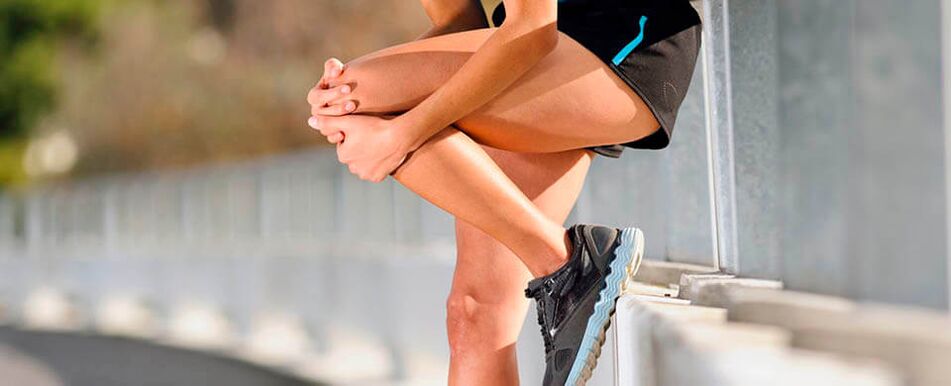
Inflammatory diseases of the knees
Often the standard treatment for knee pain is ineffective. In this case, it is not the joint itself, but the surrounding soft tissues that may be affected. Thus, tendonitis, or inflammation of the tendon, can be triggered by increased stress on the limb, past leg injuries, allergies, drug reactions, etc. The knee joint hurts with such a disease, as a rule, during the day or in the evening, at night the pain subsides. In the acute stage, the mobility of the joint is severely limited, the syndrome is persistent, does not lend itself to treatment with ointments, creams. Sharp sensations are also observed on palpation of the lateral part of the knee.
If the knees regularly hurt, the symptom worsens after hypothermia, the cause may be synovitis - inflammation of the synovial membranes. An inflammatory exudate appears inside the joint, which causes feelings of popping and pain. The causes of the pathology are varied:
- autoimmune diseases;
- metabolic diseases;
- Past injuries;
- Osteoarthritis.
Another "popular" disease in which the knees hurt is bursitis. This happens when the bursa (joint sac) becomes inflamed. In addition to the pain syndrome, there is redness, swelling, increased tenderness of the patellar area. If you do not clarify in time how to treat bursitis, it almost always becomes chronic.
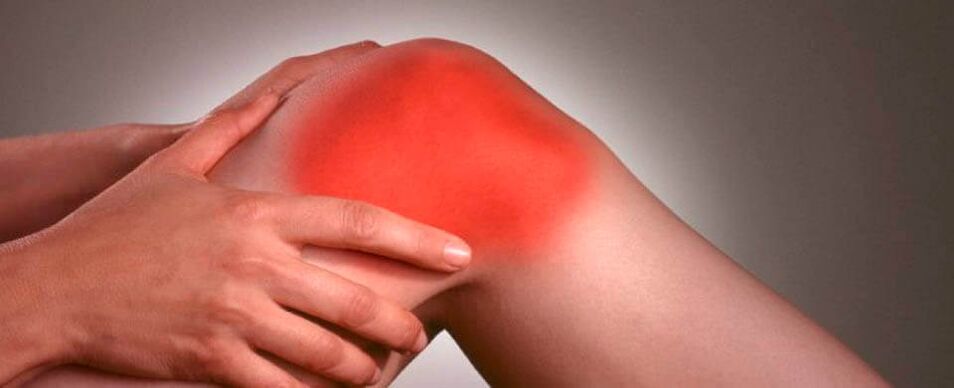
Tumors of the knee joint area
Malignant tumors of this localization are rare, the pain syndrome is typical for them only at a very advanced stage. Most often, aching pain in the knee joint is inherent in benign formations:
- Baker's cyst. This tumor occurs below the knee, on its back side. In appearance, the skin above the cyst is normal, not inflamed; in a curved form, the swelling may not be at all. When standing, a soft and clearly defined elastic formation appears at the site of the localization of the cyst. It appears after a one-sided injury to the knee, suffered damage to the cartilage. Very often the cyst accompanies chronic synovitis, arthrosis, rheumatoid arthritis. Large cysts cause not only pain in the knee, but also severe limitation of limb mobility. Due to the compression of blood vessels and nerves, other symptoms are coldness of the skin, paleness, goosebumps and numbness.
- Meniscus cyst. Appears in the external or internal meniscus, when a cavity containing fluid is located inside the cartilage. The knees in this case hurt after high loads or towards the end of the day. Large cysts can be seen on the lateral side of the joint, while smaller ones are only visible on ultrasound or X-rays.
A rare pathology is Hoff's disease - the transformation of fatty tissue in the joint, which becomes fibrous and causes joint dysfunction. Against the background of this pathology, arthrosis often develops, which causes pain in the knee joint. Causes - hormonal disturbances, menopause in women.
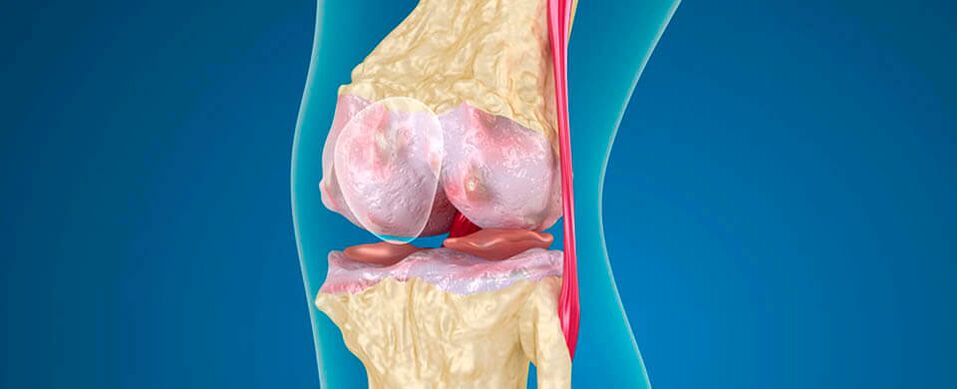
Infectious pathologies of the joint
Against the background of infection, the knee joint hurts a lot, rest does not relieve. Even urogenital and intestinal infections can give complications to the musculoskeletal system, leading to reactive arthritis. Bacteria (salmonella, chlamydia, gonococci and others) enter the cavity of the joint of the bones with the blood stream, settle on the tissues and cause inflammation. The tendons are usually inflamed too, so the knee feels swollen and warm to the touch.
Tuberculosis is a serious disease. Mycobacterium tuberculosis multiplies in bone tissue, causing bone melting, cartilage and soft tissue necrosis. Without emergency treatment, the knee joints hurt and collapse, and the process covers more and more large areas. As a result, fistulas appear - cavities containing pus, which can drain and damage the whole organism.
An acute and urgent disease is bone osteomyelitis. What to do if your knees hurt, and the process is accompanied by weakness, muscle pain, fever up to 40 degrees? If the pain in the knee is dull, bursting, and the tissues themselves are swollen, red, with blue, you need to urgently call an ambulance and have an emergency operation. Otherwise, you can lose a leg or die.
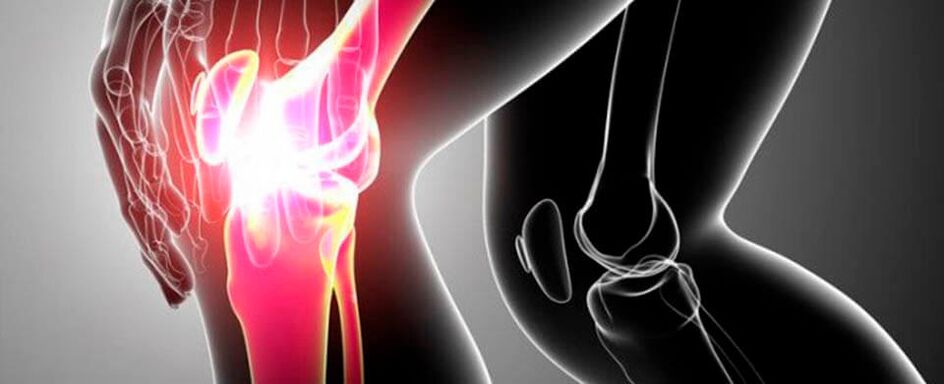
Knee pain - causes of a degenerative nature
After the age of 50, a large number of people experience knee pain. Prerequisites are aging of the body, wear of the articular apparatus and the development of the most common pathology - arthrosis (gonarthrosis). It causes a thinning, a destruction of the cartilage with a modification of the shape of the bone heads. Most often, at an early stage of the pathology, the knee hurts on one side, after a few years the lesion becomes bilateral. In the morning, the stiffness of the leg worries, but it passes quickly. Improvement of sensations is possible after physical work, intensive sports, long walks.
In advanced stages, the joint tissues collapse, osteophytes grow on the sides of the joint space. These are spikes made of bone tissue that, in severe cases, break off and cause unbearable pain. There are a number of degenerative pathologies, the symptoms of which will be similar to gonarthrosis:
- Osteochondropathy. It affects the articular surface of the bone, is associated with trauma, sports. Teenagers can develop for no apparent reason.
- Arthritis. It happens rheumatoid, psoriatic, gouty, causes chronic inflammation and destruction of the joint.
- Chondromatosis. The etiology is unclear. The disease causes the appearance of nodes on the synovial membranes, which limit the movement of the knee and cause pain.
Postmenopausal women often have knee pain due to osteoporosis - thinning of the bones, increasing their fragility. The disease is accompanied by cramps in the legs, pain in the spine, periodic fractures.
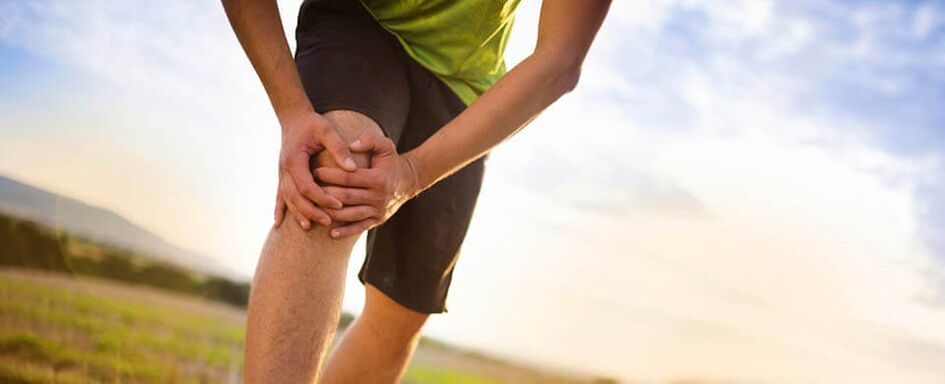
Other prerequisites for knee pain
When the knees hurt, the etiology of sensations may also lie in the defeat of the peripheral nervous system. Thus, neuropathy of the sciatic nerve against the background of damage to the lumbar vertebrae leads to a number of symptoms. A person's knees break, the thigh area hurts, the joints of the limb weaken, the sensitivity of the skin is disturbed. Leg reflexes also change.
Sometimes the whole knee joint hurts due to vascular disorders. Only in adolescence you should not worry too much - due to the rapid growth of the body, the vessels do not have time to supply the bones with blood. With age, the condition of the joint normalizes - usually by the age of 18-20 the pain stops completely.
In old age, in the presence of atherosclerosis, the knees also often hurt, what to do in this case? Without normalizing fat metabolism, plaque will continue to build up inside the arteries. The vessels clog, cease to supply the joint to the maximum. He develops osteoarthritis, the pain becomes chronic. Unpleasant sensations in the knee area can also be caused by varicose veins, thrombophlebitis and vascular thrombosis.
How to make a diagnosis?
People's knees often hurt - how to treat the condition that has arisen can only be determined after the examination. Sharp, pulling pains in the knee are characteristic of a mass of pathologies, some of which are very dangerous. For diagnosis, you need to contact a surgeon, orthopedist, neurologist, rheumatologist, traumatologist. He will conduct a survey, find out the exact symptoms of the disease, determine the accompanying signs. Additionally, the doctor at the initial appointment will perform a series of tests and physical exams to clarify the nature of the problem.
What to do when your knees hurt, what instrumental methods will help identify the causes? Usually assigned:
- ultrasound;
- MRI;
- CT;
- X-ray.
The choice of the exact technique should be left to the physician. Thus, ultrasound well reflects changes in the leg with arthrosis, damage to the meniscus. X-ray perfectly shows bone deformities, the presence of osteophytes. MRI and scanner provide complete information, they are essential for complex diseases. In addition, the doctor will prescribe blood tests to exclude inflammation and rheumatism, if necessary, a biopsy of the joint will be performed. With osteoporosis, densitometry is necessary - it will show the density of bone tissue in a patient.
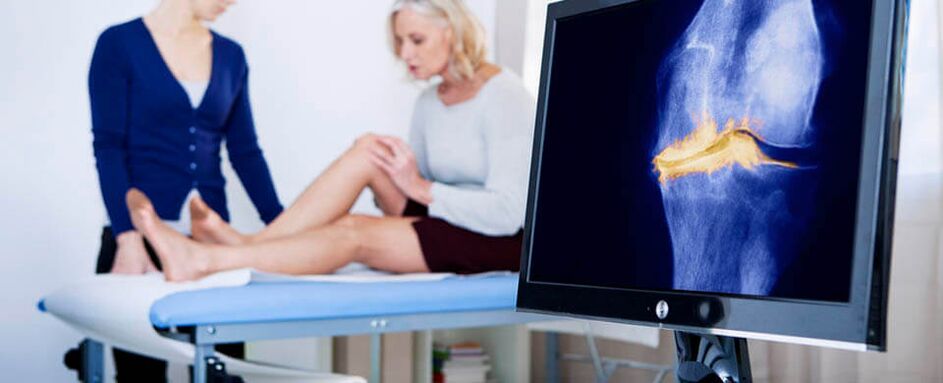
Knee pain treatment
If the pathology is traumatic in nature, traumatologists are involved in the treatment, sometimes it is carried out in a hospital. Light bruises disappear on their own within a few days, for rapid resorption of the hematoma, it is advisable to apply absorbable ointments to the knee. With pain, it is necessary to rub ointments with nonsteroidal anti-inflammatory components.
How to treat when the knee hurts with its inflammatory lesion? In the acute stage of bursitis, synovitis, arthritis, the affected leg needs rest, ice packs can be applied to it for 15 minutes for the first 3 days. Severe pain is relieved by injections of nonsteroidal anti-inflammatory drugs, injections of anesthetics directly into the joint. To prevent chronic inflammation of the joint after the pain subsides, physiotherapy and exercise therapy are prescribed.
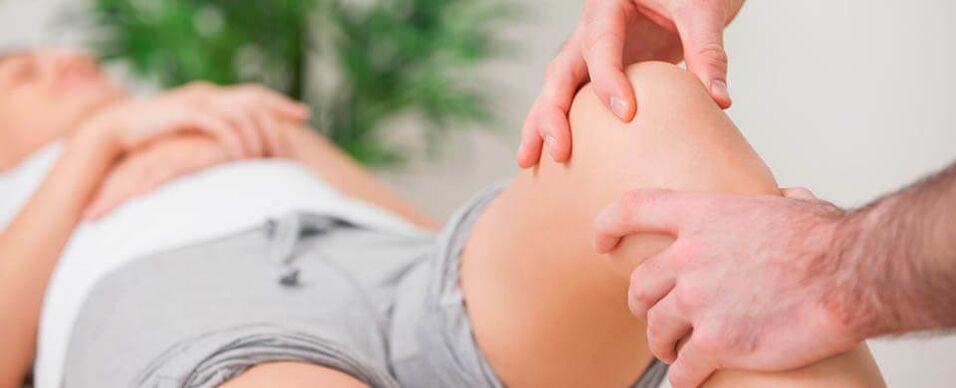
When a person has knee pain due to knee osteoarthritis, what to do in this case? The main drugs for treatment are chondroprotectors and hyaluronic acid injections. These drugs are designed to restore the nutrition of the articular cartilage, as a result, it stops breaking down. Also for knee rehabilitation should be assigned:
- vascular drugs;
- Physiotherapy;
- Gymnastic;
- Massage;
- Vitamin complexes.
Infectious diseases of the joints are an indication for the introduction of antibiotics into the joint cavities or the oral administration of drugs. In some cases, it is necessary to do an operation, removing the tissues affected by pus. Surgery is also used to treat advanced forms of osteoarthritis with osteophyte growth. Sometimes only the replacement of a joint with a prosthesis allows a person to retain the ability to walk normally.



































